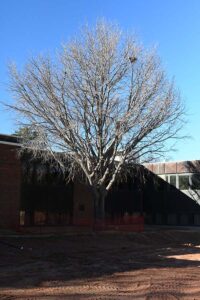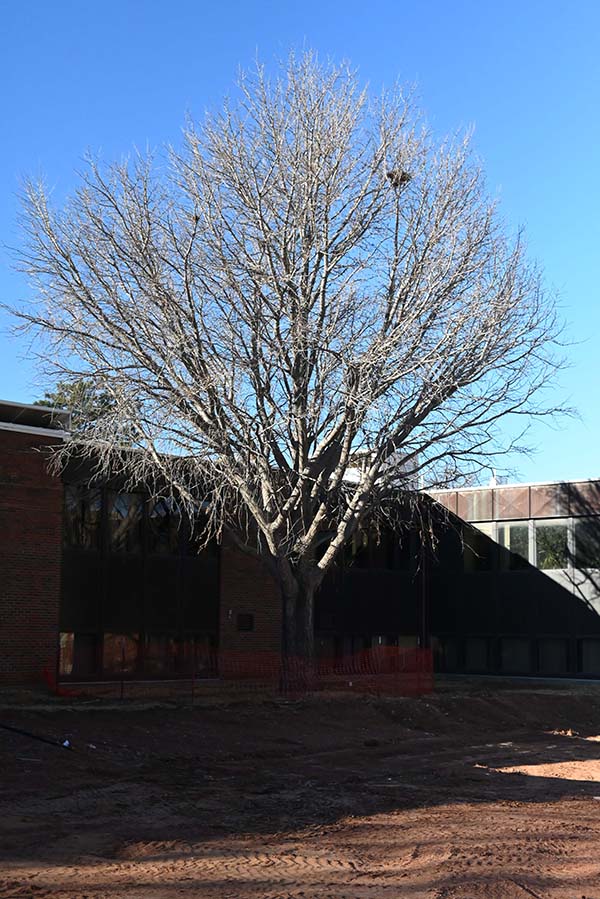By KAYLEA BROWN, Senior Reporter

A rare tree on campus is shown in this photo Feb. 11. Two Northwestern employees learned that the tree, a ginkgo biloba, is rare and is native
to China. The tree was hidden from sight until the former boiler room building was torn down in December. Traditional Chinese medicine included the use of ginkgo. The university will keep the tree alive. -Photo by Devyn Lansden
Two Northwestern employees identified a rare tree on campus after an old building was demolished.
Chief of Campus Police Cole Servis and Dr. Dennis Angle discovered a ginkgo tree next to the Science Building. The tree had been hidden from sight by the boiler room building that was torn down in December.
The tree is one of three such trees on campus. A sign in the green-space on the northwest side of campus has the locations of the other two.
The Latin name of the tree is “Ginkgo biloba.” It is sometimes referred to as the “fossil tree” or the “maidenhair tree.” It is identifiable by its fan-shaped leaves.
“I had one when I lived in Michigan,” Angle said. “The leaf on that tree is so unique. Plus, ginkgo biloba is something you can buy online that’s shown to be helpful.”
One of the oldest living trees, the ginkgo tree is known for its history in China, according to the National Center for Complementary and Integrative Health.
Traditional Chinese medicine included the use of ginkgo. Officials say extract from ginkgo tree leaves is a supplement used to help with many different conditions, including eye problems, allergies and dementia.
Identifying the tree was not difficult for Servis, either. Servis said his parents are the reason he was able to recognize it.
“My parents went here in the late ‘70s, early ‘80s,” Servis said. “It was a big deal back then with all of the science professors.
Both of my parents are science teachers, and they went through here. They knew about it, and they said, ‘Well, that’s such a historic thing.’”
After talking to his parents, Servis researched information about the tree. Servis found that the tree is unique because it is the only connection between ferns and conifers, a tree that has needle-like or scale-like leaves and cones. He obtained information from the Kew Gardens in England, known for its large and diverse collection, and learned that the tree is one of the oldest living trees. He also learned that the fossils of the leaves date back almost 200 million years.
Servis also learned that the ginkgo tree is listed as endangered by the International Union for Conservation of Nature Red List for Threatened Species, commonly known as the IUCN Red List.
Servis sent his research to Northwestern administration.
Dr. David Pecha, Northwestern’s vice president for administration, is one of the people who received Servis’s research. Pecha is the chair of the committee that had the old building torn down, which led to the finding of the tree.
Pecha said efforts were taken to make sure the tree is protected.
Pecha also said that, although the plans for what the area will become are not yet finalized, the architect on the project will be incorporating the tree into whatever is built.

